| Key | Value |
|---|---|
| Summary | Navigate through the OpenStack dashboard menu. |
| Categories | openstack |
| Difficulty | 1 |
| Author | Tytus Kurek tytus.kurek@canonical.com |
Overview
Duration: 3:00
Before you get started!
Welcome to OpenStack!
In this series of tutorials, we will walk you through all the necessary steps to install, configure and get started with OpenStack. Using just a single machine, you will learn how to use OpenStack for cloud infrastructure implementation purposes, from a single-node installation to large-scale clusters.
This tutorial is the fourth in the “Phase 1 - Learn OpenStack” series.
What is OpenStack?
OpenStack is a collection of open source projects designed to work together to form the basis of a cloud. OpenStack can be used for both private and public cloud implementation.
What is Sunbeam?
Sunbeam is an upstream project under the governance of the OpenInfra Foundation (OIF), which was created to lower the barrier to entry for OpenStack, simplify its adoption process, and set the foundation for an autonomous private cloud. Sunbeam uses cloud-native architecture and total bottom-up automation to make OpenStack more accessible to newcomers and to help users get to grips with the platform immediately.
What is MicroStack?
MicroStack (based on Sunbeam) is an OpenStack distribution designed for small-scale cloud environments. While it is available with full commercial support from Canonical, it can also be self-deployed with no friction, effectively eliminating the need for a paid consulting engagement. MicroStack currently includes core OpenStack services only, but is expected to evolve quickly to ensure full feature parity with Canonical’s Charmed OpenStack soon.
In this tutorial, you will learn how to:
- Navigate through the OpenStack dashboard menu
- Change admin user password through the OpenStack dashboard
You will only need:
One fresh physical or virtual machine with:
- Ubuntu 22.04 LTS installed,
- Static IP address assigned to its primary network interface,
- OpenSSH server installed and configured,
- 4+ core amd64 CPU,
- 16 GB of RAM,
- 50 GB of SSD storage.
- OpenStack cloud bootstrapped, configured and sample instance launched.
Change the theme
Duration: 1:00
In tutorial “2. Components”, we’ve shown how to obtain the admin user credentials and how to log in to the OpenStack dashboard. In the following tutorial, we’ll demonstrate how to navigate through it.
First, go to OpenStack dashboard URL and sign in using the admin user credentials. You will see the following page on your screen:
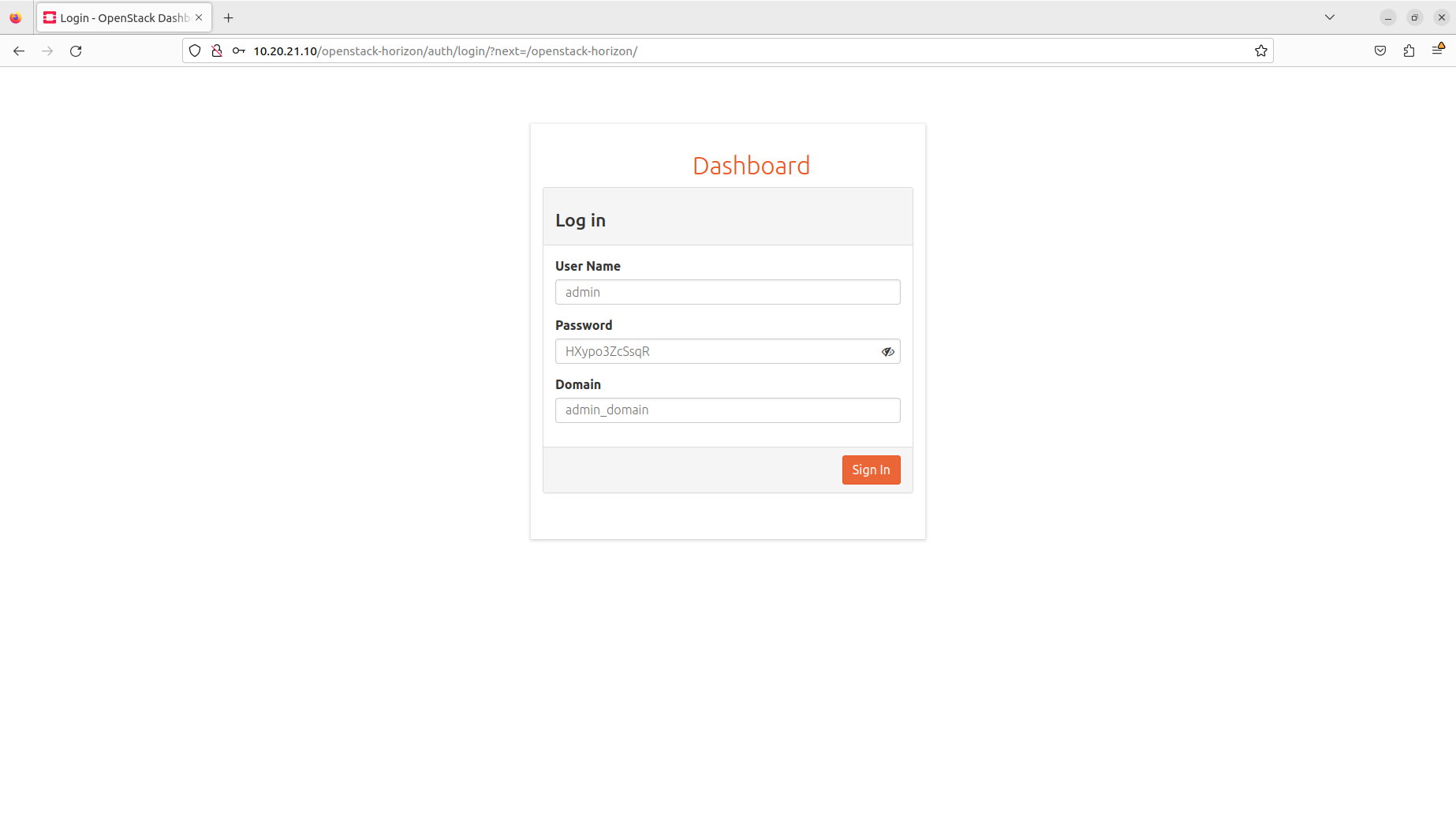
This is the landing page of the OpenStack dashboard. It outlines all the virtual resources that have been created inside of the admin project.
In the top right corner, there is a drop-down menu that shares the name of the current user (admin in this case). By clicking it, you can navigate to the user settings, open OpenStack documentation, download an RC file, change theme or sign out. Let’s click Default under Themes:
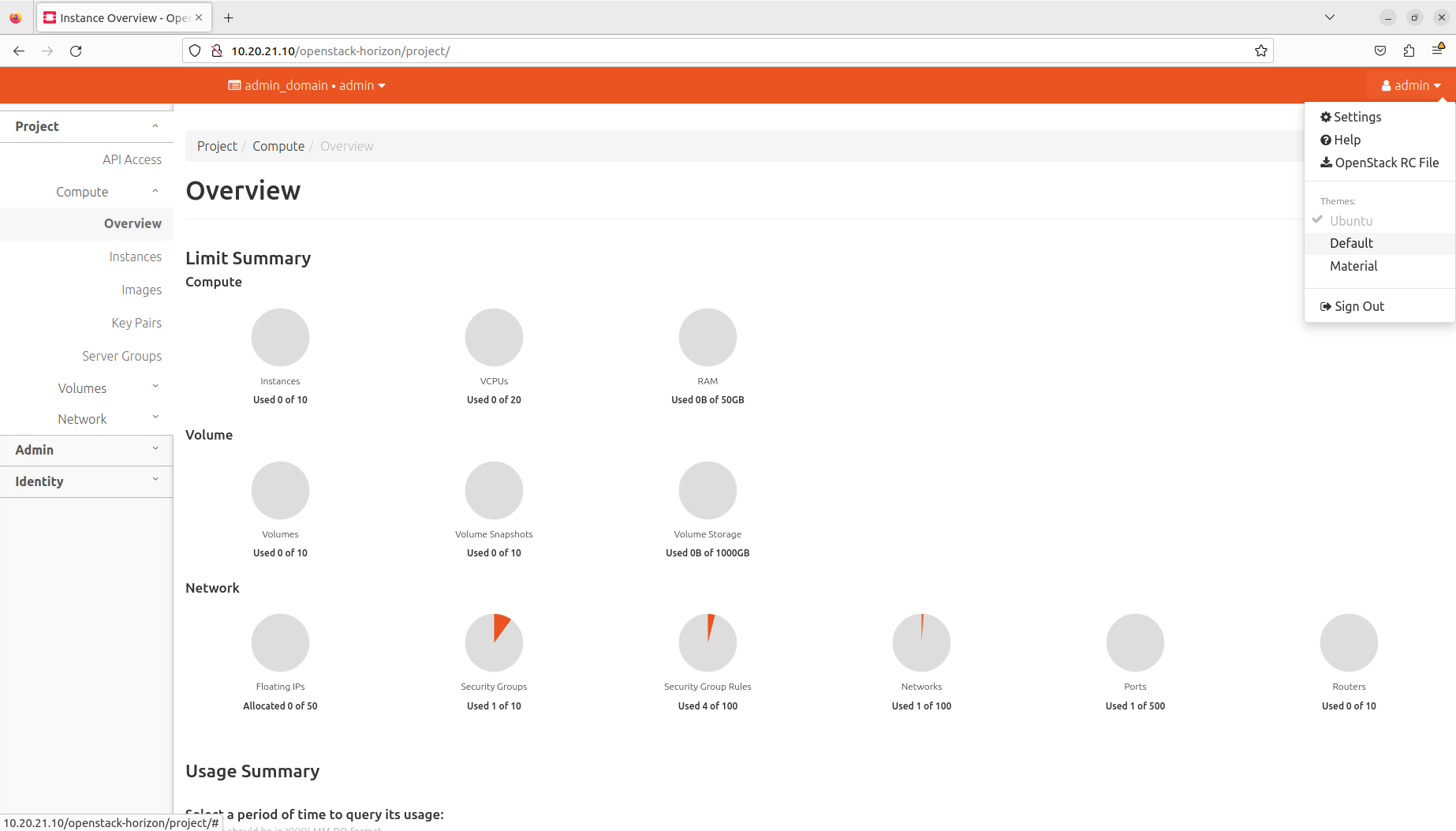
After a while you’re going to see the OpenStack dashboard in the default theme:
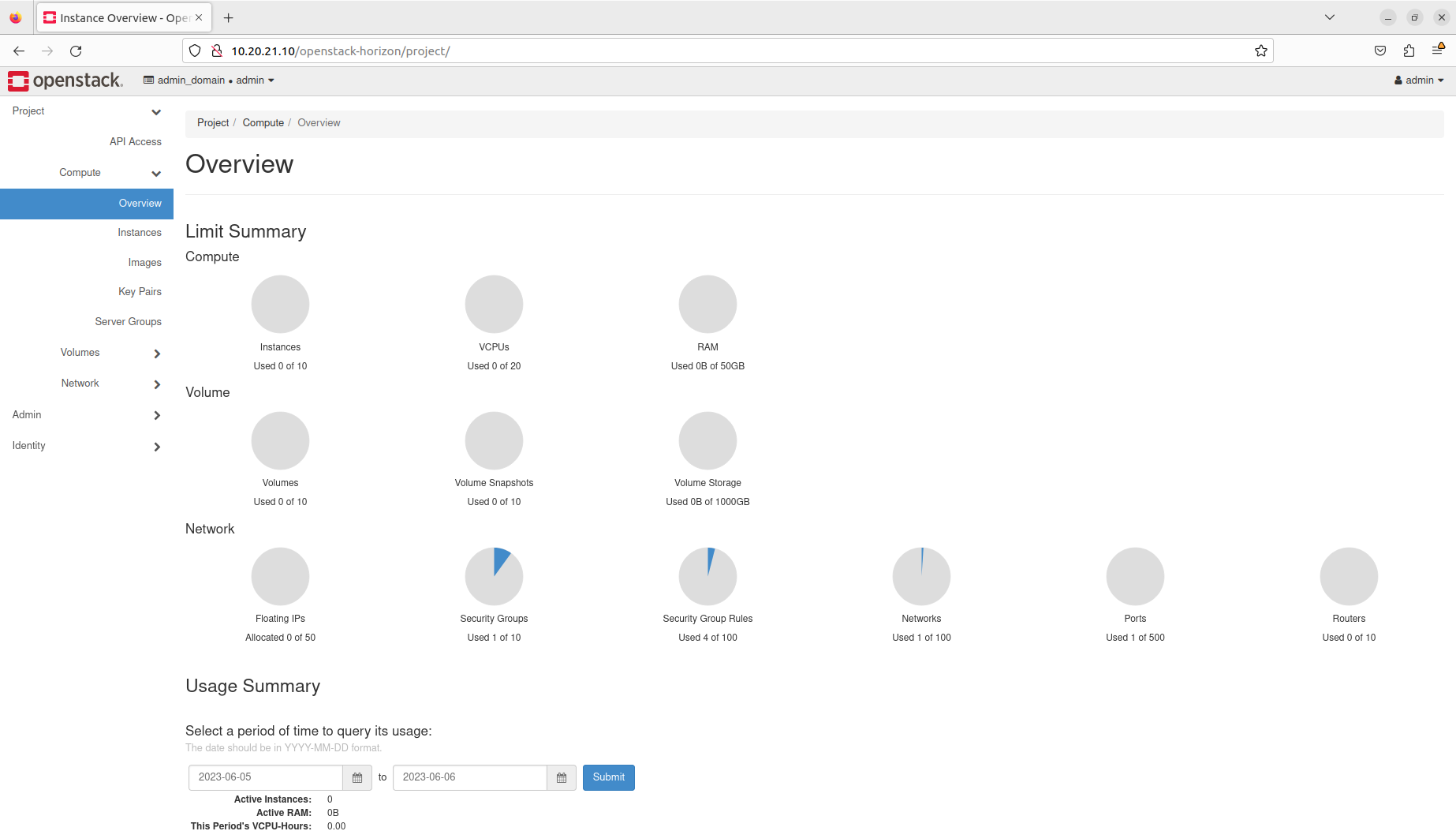
Change admin user password
Duration: 2:00
Navigate to the admin drop-down menu in the top right corner, click on it and select Settings:

This opens the User Settings tab:
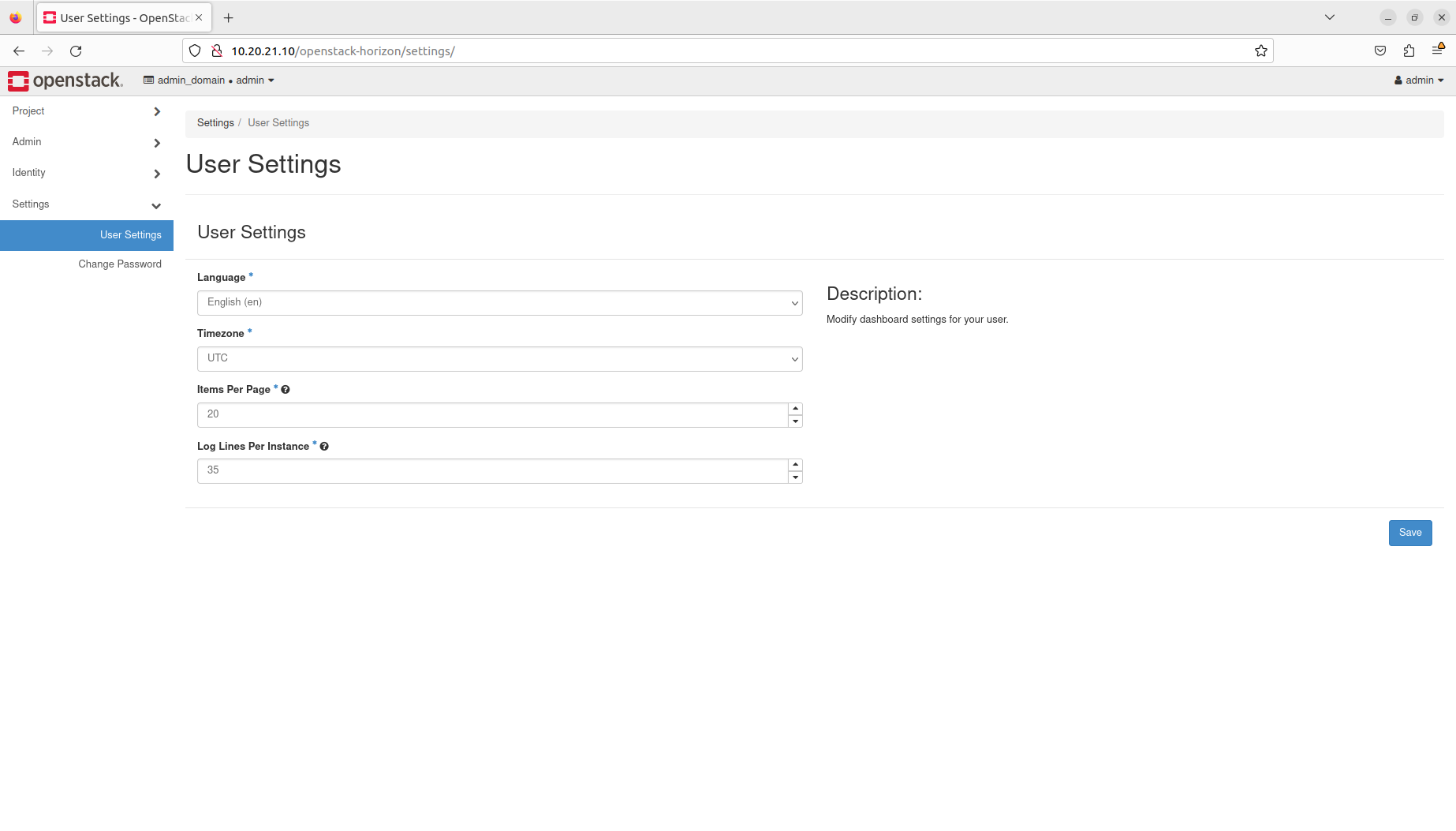
In order to change the password of the admin user, click Change Password in the menu on the left, fill in all the fields, and click the Change button:
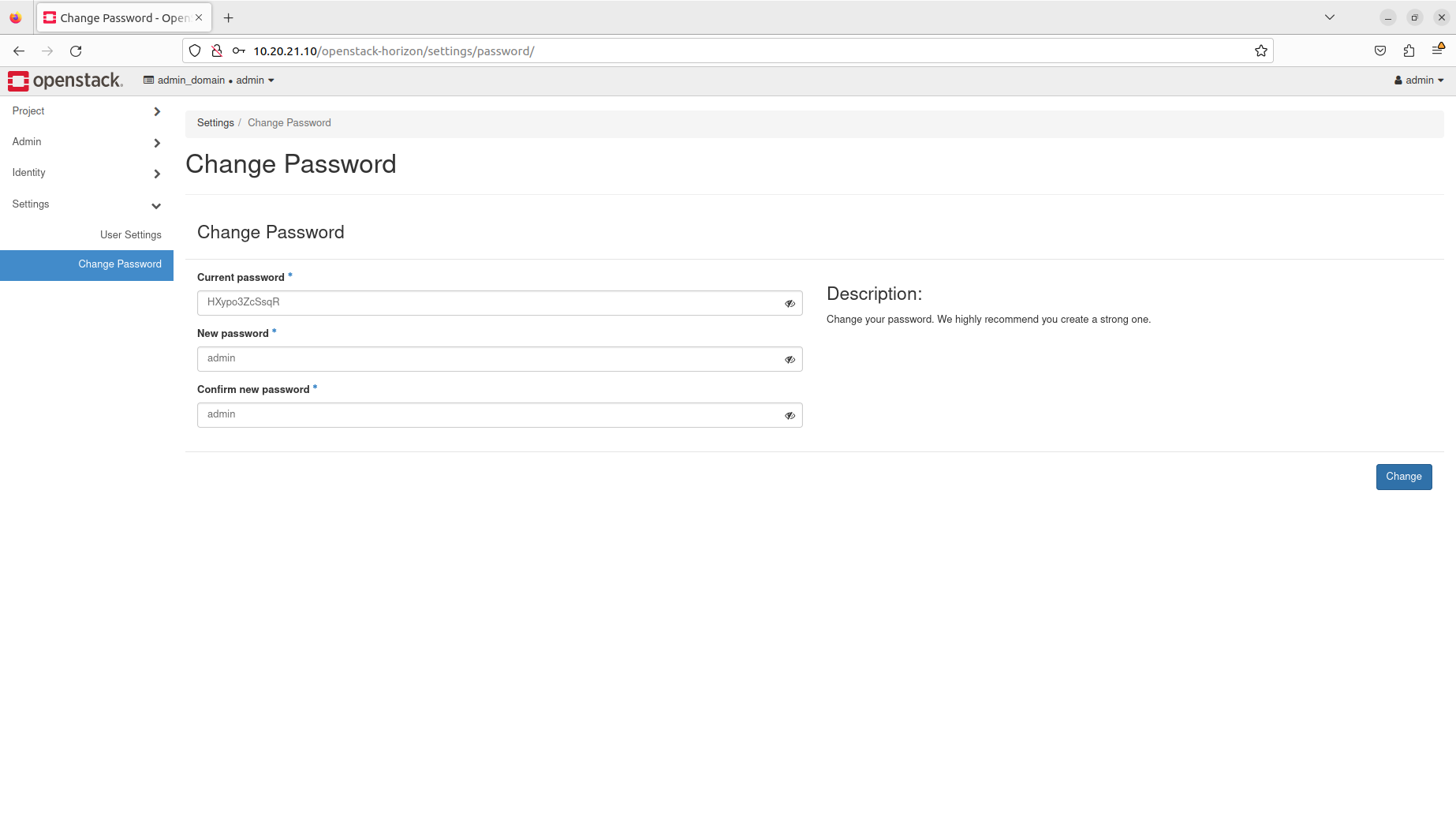
After that, you have to log in to the OpenStack dashboard with the new password:
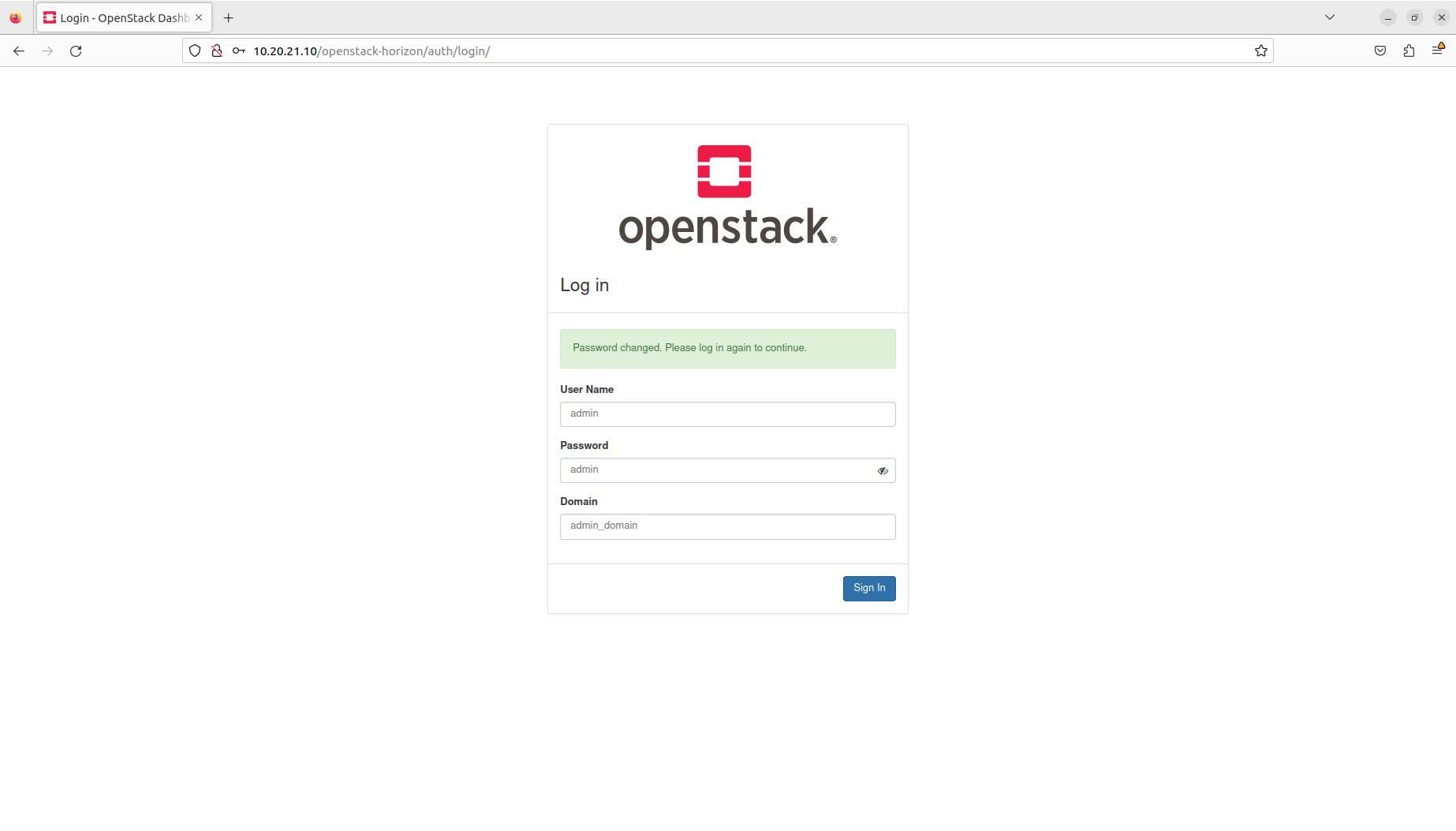
Navigate to the admin drop-down menu in the top right corner, click on it and select OpenStack RC File
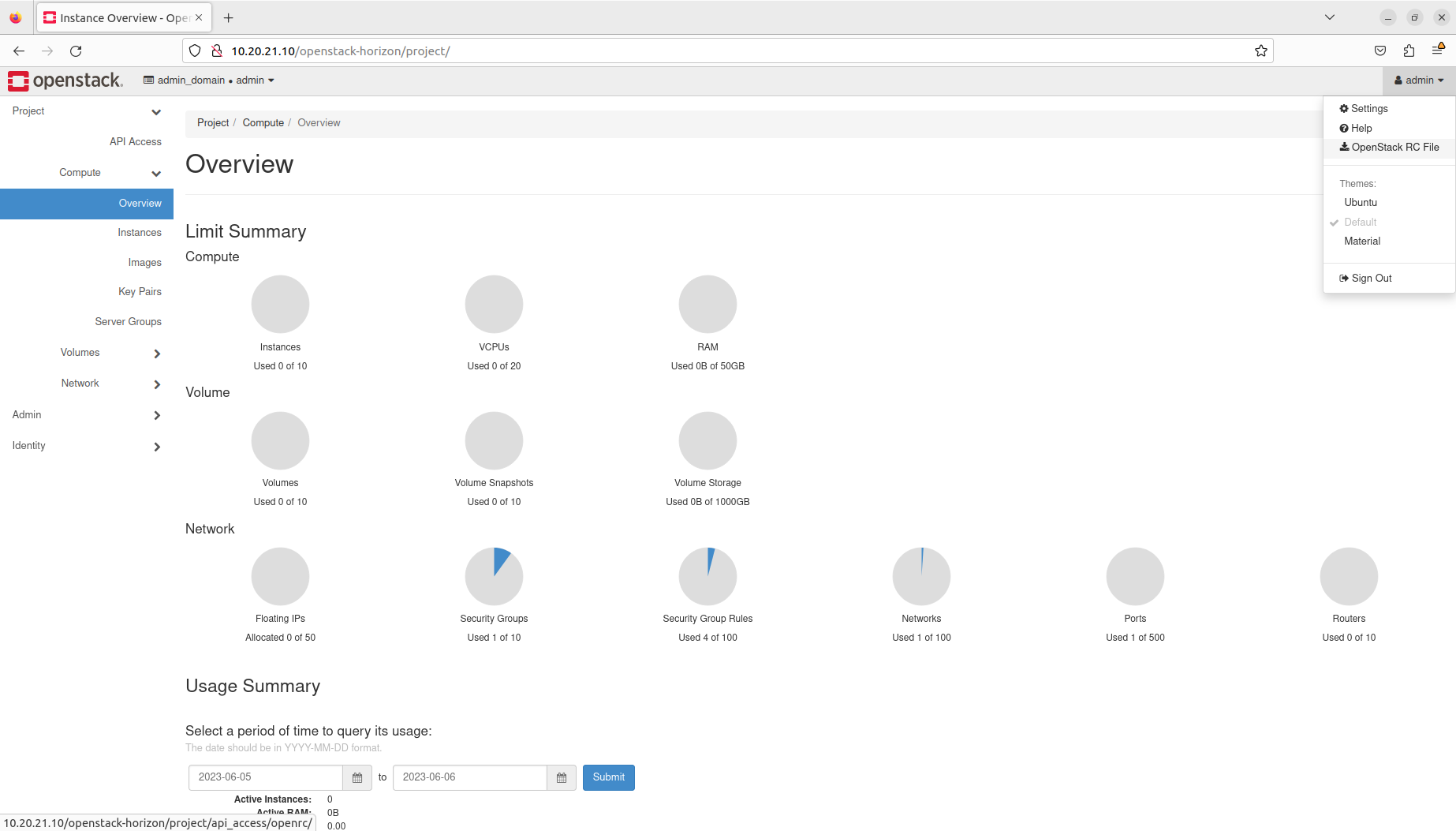
You now also have to log in to the OpenStack client with the new password. To log in as the admin user through the OpenStack client, open a new terminal window, execute the following command, and type admin when asked for the password:
$ source ~/Downloads/admin-openrc.sh
Navigate through the Project menu
Duration: 2:00
In the top left corner, there is a drop-down menu that shares the name of the current project (admin in this case). By clicking it, you can switch to other projects. So far, no other projects have been created under the admin_domain:

The Project menu on the left is grouped into three sections:
-
API Access provides information about API endpoints of OpenStack services.
-
Compute provides access to project compute resources, such as instances.
-
Network provides access to project network resources, such as virtual networks.
For example, to list all images available for the admin project, navigate to Project → Compute → Images:

Navigate through the Admin menu
Duration: 2:00
The Admin menu on the left is grouped into five sections:
-
Overview displays usage metrics across all projects.
-
Compute provides access to global compute resources, such as hypervisors.
-
Network provides access to global network resources, such as RBAC policies.
-
System provides access to various system information.
-
Optimization currently not used
For example, to list all hypervisors, navigate to Admin → Compute → Hypervisors:
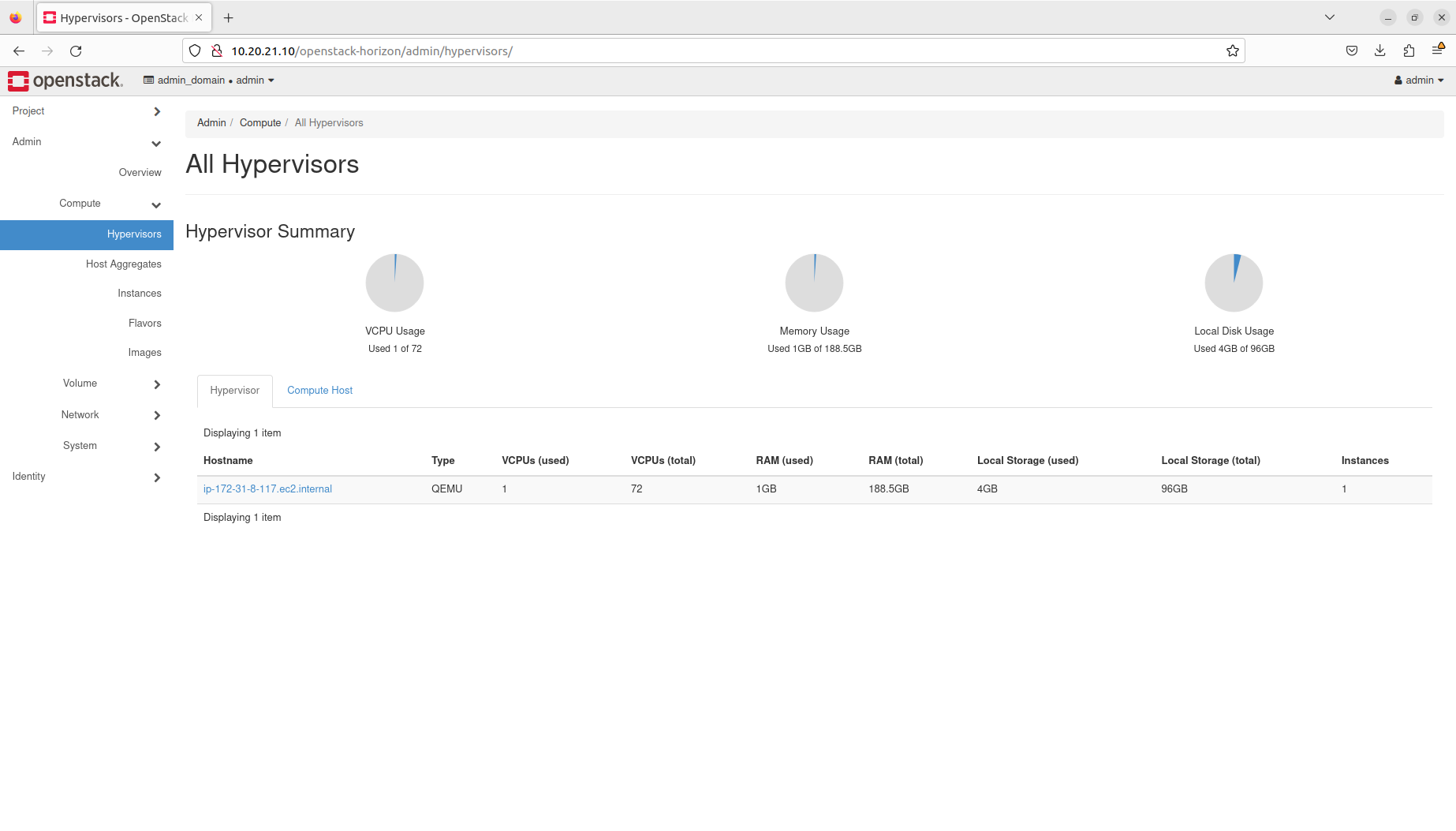
Note that the hostname of the hypervisor (here ip-172-31-8-117.ec2.internal) and its parameters may be different in your environment.
Navigate through the Identity menu
Duration: 2:00
The Identity menu on the left is grouped into six sections:
-
Domains provides acces to domains.
-
Projects provides access to project accounts.
-
Users provides access to user accounts.
-
Groups provides access to user groups.
-
Roles provides access to user roles.
-
Application Credentials provides access to application credentials.
For example, to list all user domains, navigate to Identity → Domains:
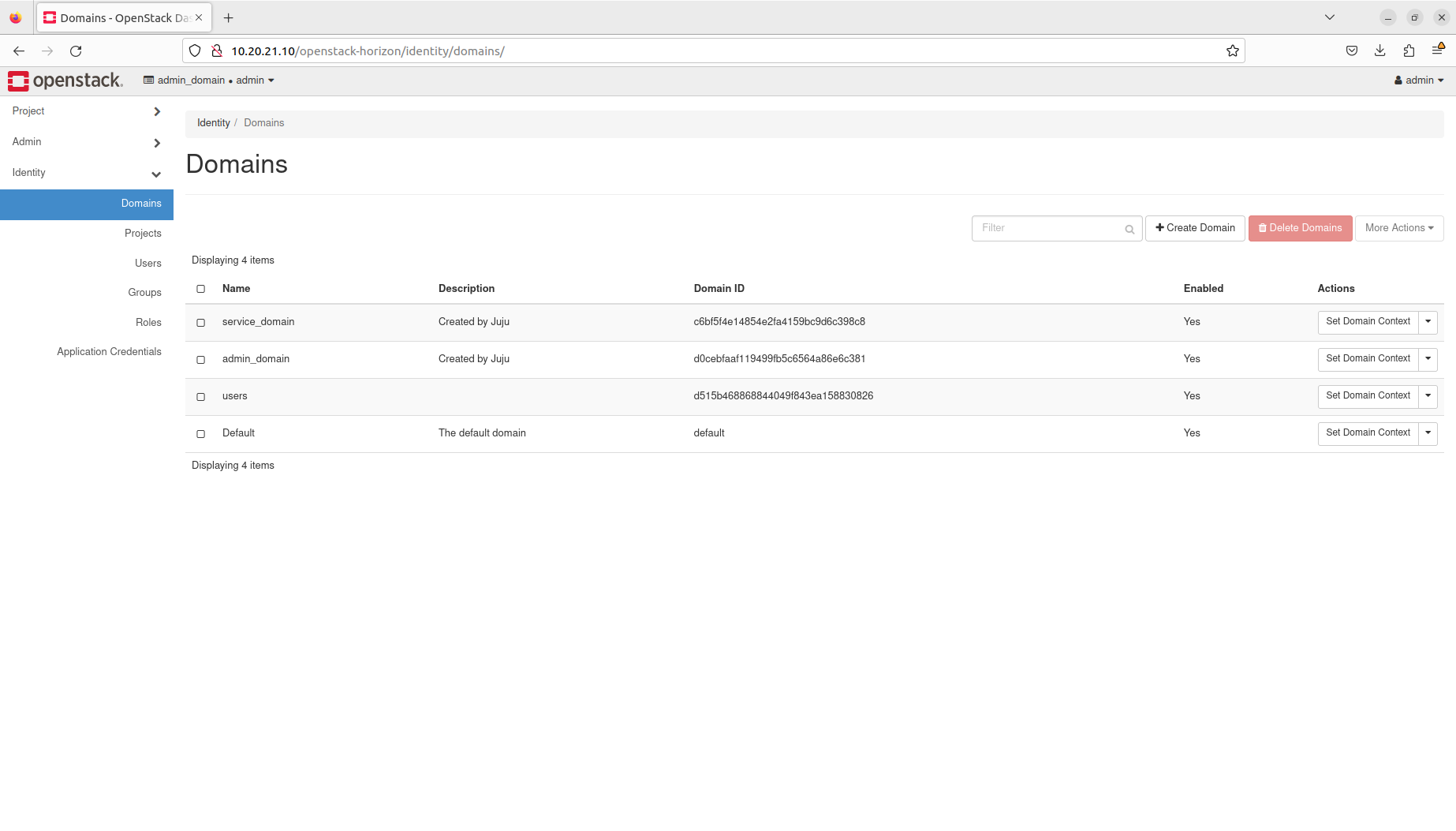
Note that domain IDs may be different in your environment.
Next steps
Duration: 2:00
Congratulations! You have reached the end of this tutorial.
You can now move to the next tutorial - “5. Templates” - or explore other tutorials.
In this tutorial, you have learnt how to:
- Navigate through the OpenStack dashboard menu
- Change admin user password through the OpenStack dashboard